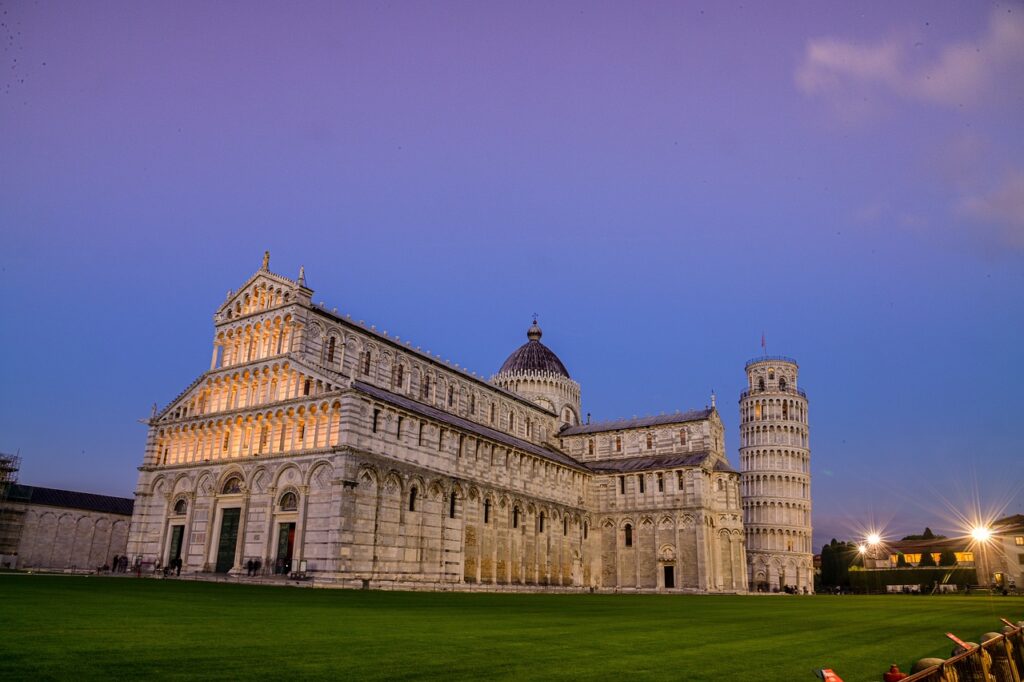About Leaning Tower of Pisa

The Leaning Tower of Pisa, known for its distinctive tilt, stands as an enduring symbol of architectural marvel and historical intrigue. This iconic Italian structure has a rich and captivating history that spans centuries, blending engineering feats, cultural heritage, and unexpected quirks.
1. Construction and Purpose
The construction of the Tower began in 1173 under the initial guidance of Bonanno Pisano and Gherardo di Gherardo. Initially intended as the freestanding bell tower for Pisa’s cathedral complex, it was meant to showcase the city’s wealth and prominence. However, the tower’s lean, evident even in the early stages, was an unintended consequence due to the marshy ground.
2. Challenges and Interventions
The tower’s lean, caused by the unstable subsoil, became a significant challenge during its construction. Work was intermittently paused due to wars and political conflicts, allowing the soil to partially settle. Architects and engineers devised ingenious methods to counteract the lean, including building the upper floors at an angle and using heavier materials on one side.
3. The Scientific Endeavors
During the Renaissance, the Tower played an unexpected role in scientific experimentation. Galileo Galilei, a native of Pisa, reportedly conducted gravity experiments by dropping objects from its top, contributing to his understanding of gravity and motion.
4. Shifting Leans and Stabilization Efforts
Over the centuries, the Tower’s lean continued to increase, reaching a critical point where concerns about its collapse grew. Various attempts were made to stabilize the structure, including soil removal from underneath and counterweights installed on the northern side. These efforts successfully reduced the lean and preserved the tower’s structural integrity.
5. Symbolism and Cultural Impact
Despite its initial construction challenges, the Leaning Tower of Pisa emerged as a symbol of architectural resilience and human ingenuity. Its tilt became its hallmark, drawing visitors from across the globe. The tower, along with the nearby cathedral and baptistry, forms the Campo dei Miracoli, a UNESCO World Heritage Site and a testament to Pisa’s historical and cultural significance.
6. Restoration and Preservation
In recent decades, extensive restoration projects were undertaken to ensure the Tower’s longevity. Skilled engineers, using modern techniques and technologies, carefully restored the tower while preserving its unique tilt, allowing it to continue captivating visitors for generations to come.
Conclusion
The Leaning Tower of Pisa’s history is a tapestry woven with architectural innovation, scientific inquiry, and cultural significance. Despite its unintended lean, it stands tall, not just as a symbol of Pisa but as a testament to human resilience and the enduring pursuit of excellence in art and engineering. Its history continues to fascinate and inspire, inviting travelers from around the world to witness its unique beauty and historical legacy firsthand.
